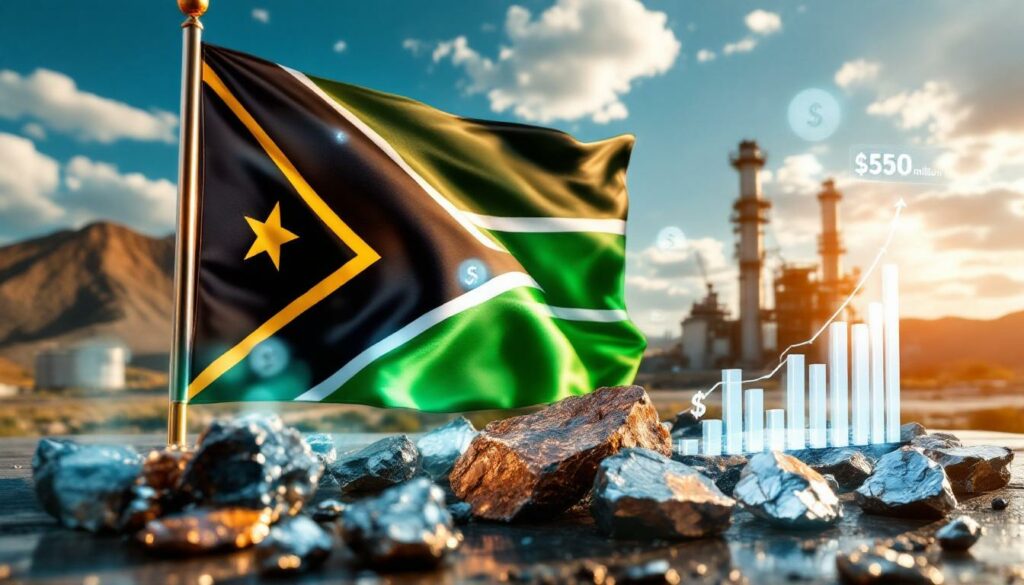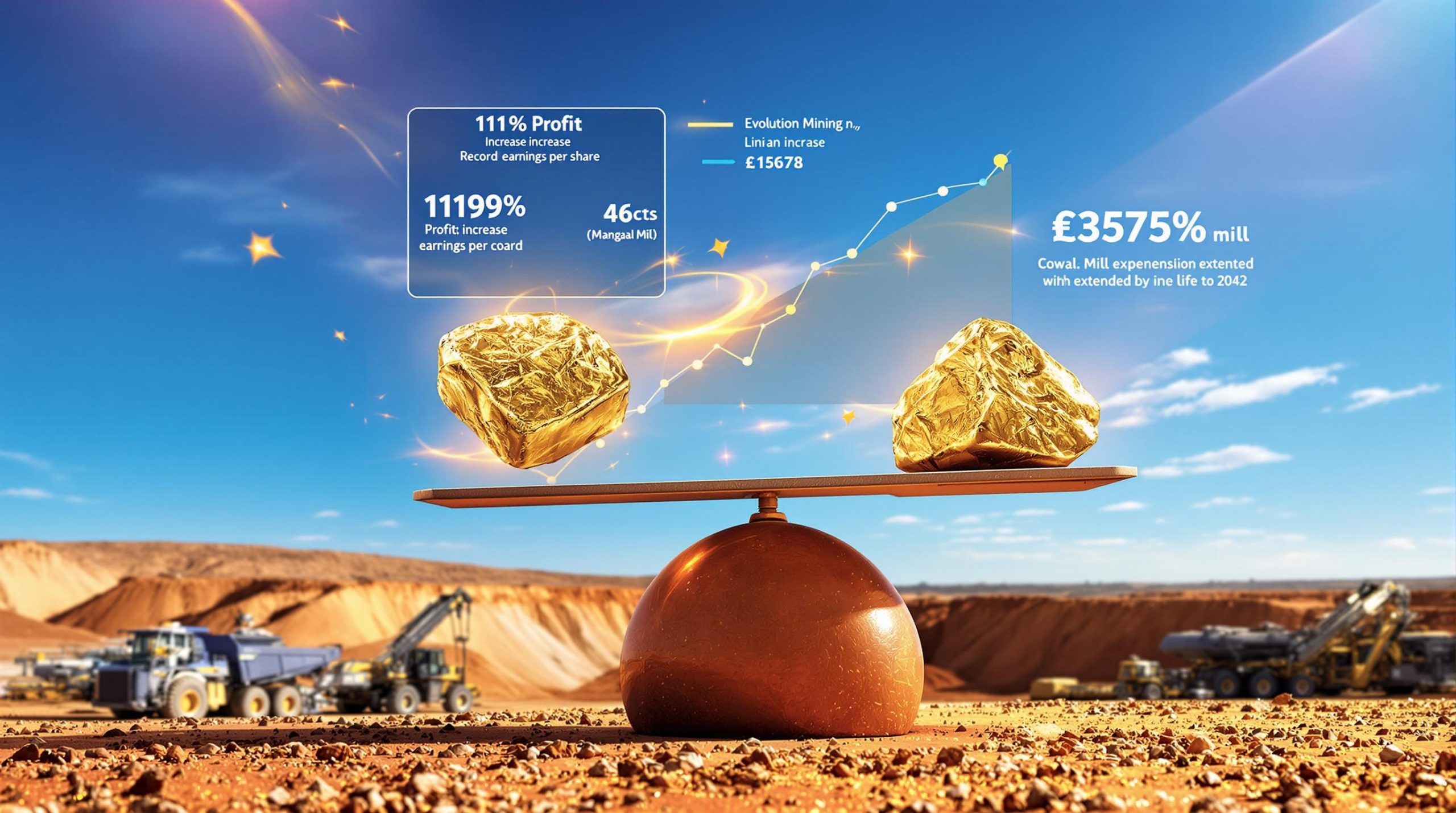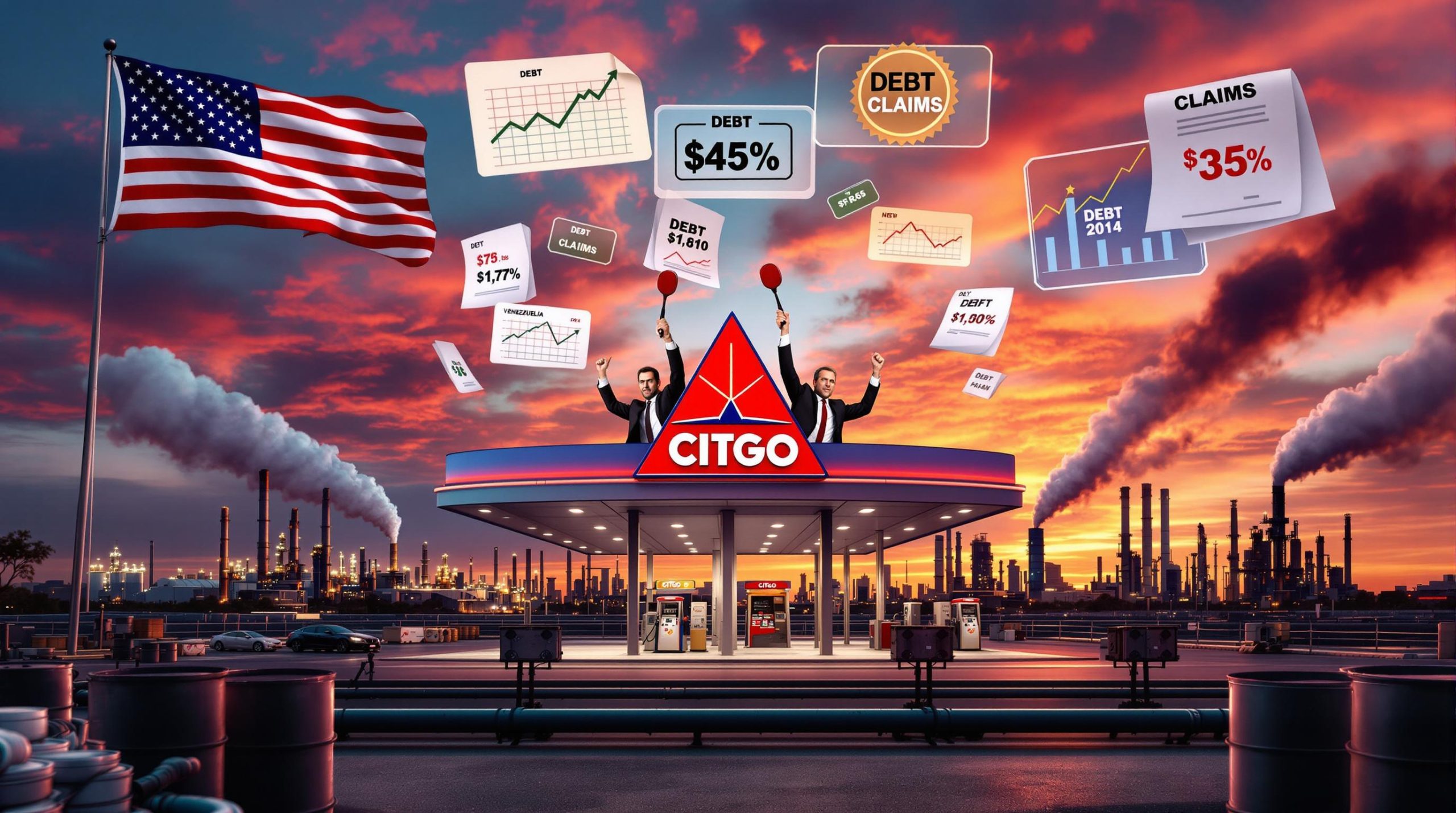US Exim Bank Shows Strong Interest in NexMetals' Botswana Mining Projects
The Export-Import Bank of the United States (Exim) has taken a significant step toward supporting critical metals development in Africa by issuing a letter of interest to NexMetals Mining. This potential financing package of up to $150 million represents a strategic move to secure access to minerals essential for the energy transition minerals while strengthening partnerships in one of Africa's most stable jurisdictions.
The letter of interest, while non-binding, signals serious intent from the US government to support critical metals projects in Botswana, particularly as global competition for these resources intensifies. With a contemplated loan tenor of up to 15 years, this financing could dramatically accelerate the redevelopment of two former producing mines with significant deposits of battery metals and other critical minerals.
Understanding the Exim Bank's Letter of Interest
The non-binding letter outlines potential financing of up to $150 million with a loan tenor extending to 15 years – significantly longer than typical commercial mining finance packages, which average around 7 years according to industry standards. This extended timeline acknowledges the capital-intensive nature of mine redevelopment and provides flexibility for phased implementation.
Morgan Lekstrom, CEO of NexMetals, highlighted the significance of this development: "This represents a willingness from the United States to fund critical metals projects in one of Africa's safest and most stable jurisdictions. It clearly denotes the US government's specific interest in Botswana, recognising both its rich mineral endowment and the scale of our high-grade projects."
The financing package may qualify under Exim's China and Transformational Exports Program, established through Section 402 of Exim's 2019 reauthorization. This program specifically aims to counter Chinese influence in strategic sectors including critical minerals, renewable energy, and biotechnology – making the Botswana projects particularly attractive for US support.
"The willingness of Exim to engage with mining projects in Botswana demonstrates the shifting priorities of Western governments toward securing supply chains for energy transition metals," notes industry analyst Fraser Institute, which consistently ranks Botswana among Africa's top mining jurisdictions for investment attractiveness.
Strategic Importance of US Government Interest
Botswana's appeal extends beyond its mineral wealth. The country has maintained a stable democratic government since independence in 1966 and boasts one of Africa's strongest mining regulatory frameworks. According to the World Bank's Governance Indicators, Botswana consistently outperforms regional averages across all metrics including political stability, regulatory quality, and control of corruption.
This stability makes Botswana an ideal partner for US strategic interests, particularly as the Biden administration has emphasized the need to reduce dependency on Chinese-controlled supply chains for critical minerals. The 2022 Inflation Reduction Act further incentivized sourcing critical minerals from countries with which the US has free trade agreements or comparable trade relationships.
For the US, diversifying critical mineral sources represents a national security priority, especially as demand for battery metals is projected to increase by 400-600% by 2040 according to International Energy Agency forecasts. By supporting projects in stable jurisdictions like Botswana, the US aims to counter China's dominance in critical mineral processing, which currently exceeds 70% globally for several key materials.
Which Botswana Mining Assets Will Benefit from Exim Support?
NexMetals Mining is focusing on restarting two former producing mines in Botswana with significant deposits of minerals essential for the energy transition. Both projects contain polymetallic deposits featuring nickel, copper, cobalt, and platinum group metals (PGMs) – all designated as critical minerals by the US Department of Energy.
Selebi Mine Overview
The Selebi mine, located in eastern Botswana near Selebi-Phikwe, was previously operated by Bamangwato Concessions Ltd from the 1970s until 2016. At its peak, the operation produced approximately 30,000 tons of nickel and 15,000 tons of copper annually, making it Botswana's largest base metals mine before its closure.
The deposit features:
- High-grade nickel-copper-cobalt mineralization with PGM credits
- Established infrastructure including power, water, and road access
- Extensive historical drilling data and production records
- Multiple exploration targets with expansion potential
Geologically, the Selebi deposit consists of massive to semi-massive sulfide bodies hosted within metamorphosed mafic-ultramafic rocks of the Archean basement complex. The mineralization style is similar to other world-class magmatic sulfide deposits, with significant concentrations of minerals critical for electric vehicle batteries and renewable energy infrastructure.
Selkirk Project Details
The complementary Selkirk project operated from 1988 to 2002 and features similar geological characteristics to Selebi. Located within the same geological province, Selkirk offers operational synergies and the potential for a regional development approach that could optimize capital efficiency and infrastructure utilization.
The deposit contains:
- Nickel-copper sulfide mineralization with cobalt and PGM credits
- Existing underground development with potential for rapid restart
- Historical resource estimates indicating significant remaining metal
- Exploration potential along strike and at depth
NexMetals' strategy involves leveraging the historical data from both mines while applying modern exploration and processing technologies to enhance recovery rates and operational efficiency. This approach could significantly reduce development timelines compared to greenfield projects.
Critical Metals Profile and Significance
The mineral portfolio at both projects aligns perfectly with emerging technology demands:
| Metal | Primary Uses | Market Outlook | Supply Risk |
|---|---|---|---|
| Nickel | EV batteries, stainless steel | 300% demand growth by 2040 | High – Class 1 nickel shortage projected |
| Copper | Electrical wiring, renewable energy | 200% demand growth by 2040 | Medium – Grade decline in major mines |
| Cobalt | Battery cathodes, superalloys | 60% growth by 2030 | Very high – 70% from DRC |
| PGMs | Catalytic converters, hydrogen tech | Stable with growth in hydrogen | Medium – Concentrated in SA, Russia |
Nickel, particularly the high-grade "Class 1" nickel present in these deposits, is essential for high-performance lithium-ion batteries. The World Bank projects that nickel demand for energy transition technologies could increase by 300% by 2040, creating potential supply shortfalls that make the Botswana projects strategically important.
Disclaimer: Market forecasts are inherently uncertain and subject to revision based on technological developments, policy changes, and market conditions. Investors should conduct their own due diligence regarding metal market projections.
How Does This Financing Support Global Critical Minerals Strategy?
The potential Exim support for NexMetals and Botswana mines represents a coordinated Western response to China's dominance in critical minerals supply chains, aligning with broader geopolitical and economic security objectives.
Connection to China and Transformational Exports Program
Exim's China and Transformational Exports Program was specifically designed to counter the influence of Chinese export credit agencies, which have dominated financing for mineral projects across Africa. According to Brookings Institution data, Chinese state-backed entities have provided financing for approximately 78% of African critical mineral projects over the past decade.
The program provides:
- Competitive financing terms that can match or exceed Chinese offers
- Longer loan tenors than typically available from commercial sources
- Reduced country risk premiums for strategic projects
- Streamlined approval processes for qualifying initiatives
For projects to qualify under the program, they must demonstrate potential to displace Chinese dominance in key sectors and align with US foreign policy objectives. The NexMetals projects appear to meet these criteria given their critical minerals focus and location in a stable, democratic African nation.
US Strategic Minerals Security Implications
The Biden administration's 100-day supply chain review in 2021 identified critical minerals as a key vulnerability in US economic security. The report specifically highlighted nickel, cobalt, and PGMs – all present in the Botswana projects – as minerals of concern due to concentrated supply chains and limited domestic production.
US policy responses have included:
- Invoking the Defense Production Act for critical minerals in 2022
- Establishing a Critical Minerals Mapping Initiative with allies
- Developing the Mineral Security Partnership with 11 partner nations
- Increasing Exim and DFC financing capabilities for overseas mining
These initiatives aim to reduce the estimated 31-54% US import reliance for many critical minerals, with a particular focus on diversifying away from Chinese-controlled supply chains. The Botswana projects represent exactly the kind of opportunity these programs were designed to support, similar to previous US Exim loan examples for strategic minerals.
Botswana as a Strategic Mining Partner
Botswana brings several advantages as a partner for critical minerals development:
- Political stability: Consistently ranked among Africa's most stable democracies since independence in 1966
- Mining expertise: Long history of successful mining operations, primarily in diamonds through Debswana
- Regulatory framework: Transparent mining code with established permitting processes
- Investment protection: Strong rule of law and protection of property rights
- Infrastructure: Relatively well-developed power, water and transportation systems
The Fraser Institute's Annual Survey of Mining Companies consistently ranks Botswana among the top African jurisdictions for mining investment attractiveness, often placing it in the global top 25. This stability contrasts sharply with other mineral-rich African nations like the Democratic Republic of Congo, which despite holding 70% of global cobalt reserves, ranks among the highest-risk mining jurisdictions.
What Are the Economic Implications for NexMetals and Botswana?
The potential $150 million financing package represents a transformative opportunity for both NexMetals and the Botswana economy, creating substantial economic benefits while advancing strategic resource development.
Financial Impact for NexMetals Mining
For NexMetals, the potential Exim financing offers several significant advantages compared to traditional mining finance options:
- Extended tenor: The 15-year loan period significantly exceeds typical 5-7 year commercial mining loans
- Competitive rates: Exim financing typically offers fixed rates 150-250 basis points below commercial alternatives
- Reduced equity dilution: Less reliance on equity markets preserves shareholder value
- Simplified capital structure: Single large lender versus syndicated commercial arrangements
- Enhanced project economics: Lower financing costs improve overall project returns
Based on comparable projects, mine redevelopment costs for both Selebi and Selkirk could range from $200-300 million, meaning the potential $150 million Exim package could cover 50-75% of required capital. This significantly reduces the additional financing needed from equity markets or commercial lenders.
Economic Benefits for Botswana
Mining already contributes approximately 24% of Botswana's non-diamond GDP according to World Bank data. The redevelopment of the Selebi and Selkirk mines would further diversify the country's mining sector beyond its traditional diamond focus.
Projected economic impacts include:
- Employment creation: Based on similar-sized operations, the projects could generate 800-1,200 direct jobs and 2,000-3,000 indirect jobs
- Tax revenue: Corporate tax (22%) plus mining royalties (10%) could generate $20-30 million annually at full production
- Skills development: Technical training and knowledge transfer in modern mining practices
- Local procurement: Opportunities for local businesses in the supply chain
- Infrastructure improvements: Potential upgrades to power, water and transportation systems
Similar operations in Botswana, such as the Khoemacau copper mine, have demonstrated significant local economic benefits, creating approximately 1,200 jobs and generating an estimated $50 million in annual tax revenue according to Debswana's Sustainability Report.
Project Development Timeline Considerations
The 15-year financing tenor aligns well with the anticipated project lifecycle:
| Timeline Phase | Estimated Duration | Key Activities |
|---|---|---|
| Pre-financing | 6-9 months | Due diligence, feasibility studies, Exim application process |
| Initial development | 18-24 months | Mine rehabilitation, plant construction, infrastructure upgrades |
| Ramp-up period | 12-18 months | Phased production increase to nameplate capacity |
| Full production | 10+ years | Sustained operations with potential expansion |
| Closure & remediation | 2-3 years | Progressive rehabilitation and closure activities |
This extended timeline reflects the capital-intensive nature of mine redevelopment and the long-term strategic importance of securing stable supplies of critical minerals.
Note: Project timelines are estimates based on industry standards for similar operations and may vary based on technical challenges, permitting processes, and market conditions.
What Challenges Must Be Addressed Before Financing Is Secured?
Despite the positive letter of interest, several significant hurdles remain before definitive financing can be secured. These challenges span technical, environmental, financial, and regulatory domains.
Due Diligence Requirements
Exim's formal approval will require comprehensive due diligence across multiple dimensions:
- Technical assessment: Independent verification of resource estimates, mining plans, and processing methodologies
- Environmental review: Compliance with both Botswana regulations and international standards (IFC Performance Standards)
- Financial modeling: Detailed capital and operating cost estimates with sensitivity analysis
- Market analysis: Validation of price projections for nickel, copper, cobalt, and PGMs
- Legal review: Title verification, permit status, and regulatory compliance
Based on previous Exim mining projects, this due diligence process typically takes 6-9 months and involves multiple independent expert consultants. Similar projects have faced delays when resource estimates required additional verification or environmental concerns arose during review.
Environmental and social impact assessment (ESIA) will be particularly critical given the historical operations at both sites. Botswana's ESIA approval process averages 18 months according to mining industry benchmarks, though this timeline may be expedited for brownfield redevelopments with existing permits.
US Export Content Requirements
One of the most challenging aspects of Exim financing involves meeting US content requirements:
- Minimum threshold: At least 51% of goods and services must be of US origin
- Documentation: Detailed tracking and verification of procurement sources
- Supply chain planning: Early identification of US suppliers for key equipment
- Structural design: Engineering decisions may need to prioritize US-sourced options
These requirements can present significant challenges for mining projects, which typically source equipment globally based on cost and performance considerations. Similar projects, such as Rio Tinto's Oyu Tolgoi in Mongolia, experienced delays of up to two years resolving procurement compliance issues.
NexMetals will need to develop a comprehensive procurement strategy that balances cost efficiency with US content requirements. This may involve:
- Identifying key US mining equipment manufacturers (Caterpillar, Joy Global, etc.)
- Sourcing engineering and technical services from US firms
- Utilizing US-based software and technology systems
- Structuring packages to maximize qualifying content
Project Development Milestones
Beyond financing requirements, NexMetals must achieve several critical technical and regulatory milestones:
- Feasibility study completion: Technical and economic validation of the projects
- Mineral resource upgrades: Conversion of historical estimates to current standards (JORC/NI 43-101)
- Mining license renewals/transfers: Ensuring proper title and permissions
- Water use permits: Securing adequate allocations for processing requirements
- Power supply agreements: Finalizing arrangements with Botswana Power Corporation
- Community agreements: Establishing social license with local stakeholders
Each of these elements represents a potential bottleneck that could delay project advancement. The concurrent progression of these workstreams alongside the Exim application process will be critical for maintaining momentum.
How Does This Compare to Other Critical Minerals Financing Initiatives?
The potential Exim support for NexMetals' Botswana projects represents part of a broader global competition for critical minerals influence, with significant implications for US-China trade dynamics and supply chain security.
Global Critical Minerals Financing Landscape
Government-backed financing for critical minerals has expanded dramatically in recent years as nations seek to secure supply chains for energy transition metals. According to International Energy Agency data, Western government initiatives for critical minerals grew by approximately 40% year-over-year in 2024-2025.
Major international initiatives include:
| Initiative | Sponsor | Size | Focus | Timeline |
|---|---|---|---|---|
| China Belt & Road | China Eximbank/AIIB | $8B+ annually | Global projects with Chinese offtake | 2013-ongoing |
| EU Critical Raw Materials Act | European Investment Bank | €2B fund | European and partnership countries | 2023-ongoing |
| Critical Minerals Facility | Australia | AUD $2B | Indo-Pacific region | 2022-ongoing |
| Canada Critical Minerals Strategy | Export Development Canada | CAD $3.8B | Domestic and allied countries | 2022-ongoing |
| Japan JOGMEC | Japanese government | $1.2B annually | Global equity investments | 1980s-ongoing |
The Exim Bank's engagement with NexMetals represents part of a coordinated Western response to China's early dominance in critical minerals financing. This mirrors similar US government-backed investments in other regions, such as Exim's
Ready to Stay Ahead of the Next Major Mineral Discovery?
Discover significant ASX mineral announcements before the market with Discovery Alert's proprietary Discovery IQ model, turning complex data into actionable investment opportunities. Visit our discoveries page to see how major mineral finds have generated substantial returns and begin your 30-day free trial today.




